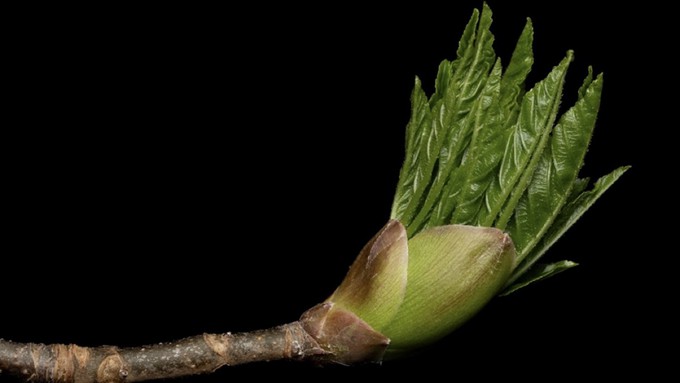
Patricia Carpenter opens her property for the Early Spring Ramble

The buckeye buds are opening and showing off their green at Patricia Carpenter's native plant garden, which will be available for strolling Sunday. Courtesy Patricia Carpenter; photo by Beth Savidge
St. Patrick's Day plus awakening plants and springlike weather will add up to a celebration of green this Sunday at Patricia Carpenter's native plant garden in Yolo County.
The Seasonal Early Spring Ramble at Carpenter's 1-acre site, on Pierce Ranch Road west of Davis, is a free event, but registration is required. Sign up here; maps are available online. The property will be open for strolling and inspiration from 10 a.m. to 3 p.m. Sunday, March 17. Registered visitors can stroll the garden any time during that period.
Carpenter is a California Native Plant Society Ambassador whose garden has taken shape over the past 19 years; it now features about 400 species and cultivars of California native plants.
Early spring highlights at the garden are expected to include plenty of blooms from wildflowers, as well as Ceanothus and Ribes species and cultivars. Spring maintenance chores, such as pruning, pest control and mulching, can be observed. Carpenter also reports that she has been collecting native plant seeds to share.
"The rain has been wonderful, but I am looking forward to a bit of sunshine!" she says.
A special guest during the day will be botanist Glen Holstein, who can tell about the new CNPS Yolo-Colusa Chapter. He also is a wildflower enthiusiast who enjoys helping visitors identify plants.
Carpenter herself will conduct an optional orientation and Q&A session at 11 a.m. and 1 p.m. Meet near the check-in table.
Visitors are welcome to bring a snack or lunch to enjoy during the day. Also note:
-- Sturdy shoes are advised.
-- A composting toilet is available.
-- No dogs are allowed.
Carpenter's non-native garden also will be open for visiting.
To read more about the native garden, see a map and view a plant list, visit her CNPS Ambassador profile page here.
Comments
0 comments have been posted.Sacramento Digs Gardening to your inbox.
Food in My Back Yard Series
May 6: Maintain soil moisture with mulch for garden success
April 29: What's (already) wrong with my tomato plants?
April 22: Should you stock up on fertilizer? (Yes!)
April 15: Grow culinary herbs in containers
April 8: When to plant summer vegetables
April 1: Don't be fooled by these garden myths
March 25: Fertilizer tips: How to 'feed' your vegetables for healthy growth
March 18: Time to give vegetable seedlings some more space
March 11: Ways to win the fight against weeds
March 4: Potatoes from the garden
Feb. 25: Plant a fruit tree now -- for later
Feb. 18: How to squeeze more food into less space
Feb. 11: When to plant? Consider staggering your transplants
Feb. 4: Starting in seed starting
Sites We Like
Garden Checklist for week of May 11
Make the most of the lower temperatures early in the week. We’ll be back in the 80s by Thursday.
* Plant, plant, plant! It’s prime planting season in the Sacramento area. Time to set out those tomato transplants along with peppers and eggplants. Pinch off any flowers on new transplants to make them concentrate on establishing roots instead of setting premature fruit.
* Direct-seed melons, cucumbers, summer squash, corn, radishes, pumpkins and annual herbs such as basil.
* Harvest cabbage, lettuce, peas and green onions.
* In the flower garden, direct-seed sunflowers, cosmos, salvia, zinnias, marigolds, celosia and asters. (You also can transplant seedlings for many of the same flowers.)
* Plant dahlia tubers.
* Transplant petunias, marigolds and perennial flowers such as astilbe, columbine, coneflowers, coreopsis, dahlias, rudbeckia and verbena.
* Keep an eye out for slugs, snails, earwigs and aphids that want to dine on tender new growth.
* Feed summer bloomers with a balanced fertilizer.
* For continued bloom, cut off spent flowers on roses as well as other flowering plants.
* Add mulch to the garden to maintain moisture. Mulch also cuts down on weeds. But don’t let it mound around the stems or trunks of trees or shrubs. Leave about a 6-inch-to-1-foot circle to avoid crown rot or other problems.
* Remember to weed! Pull those nasties before they set seed.
* Water early in the day and keep seedlings evenly moist.